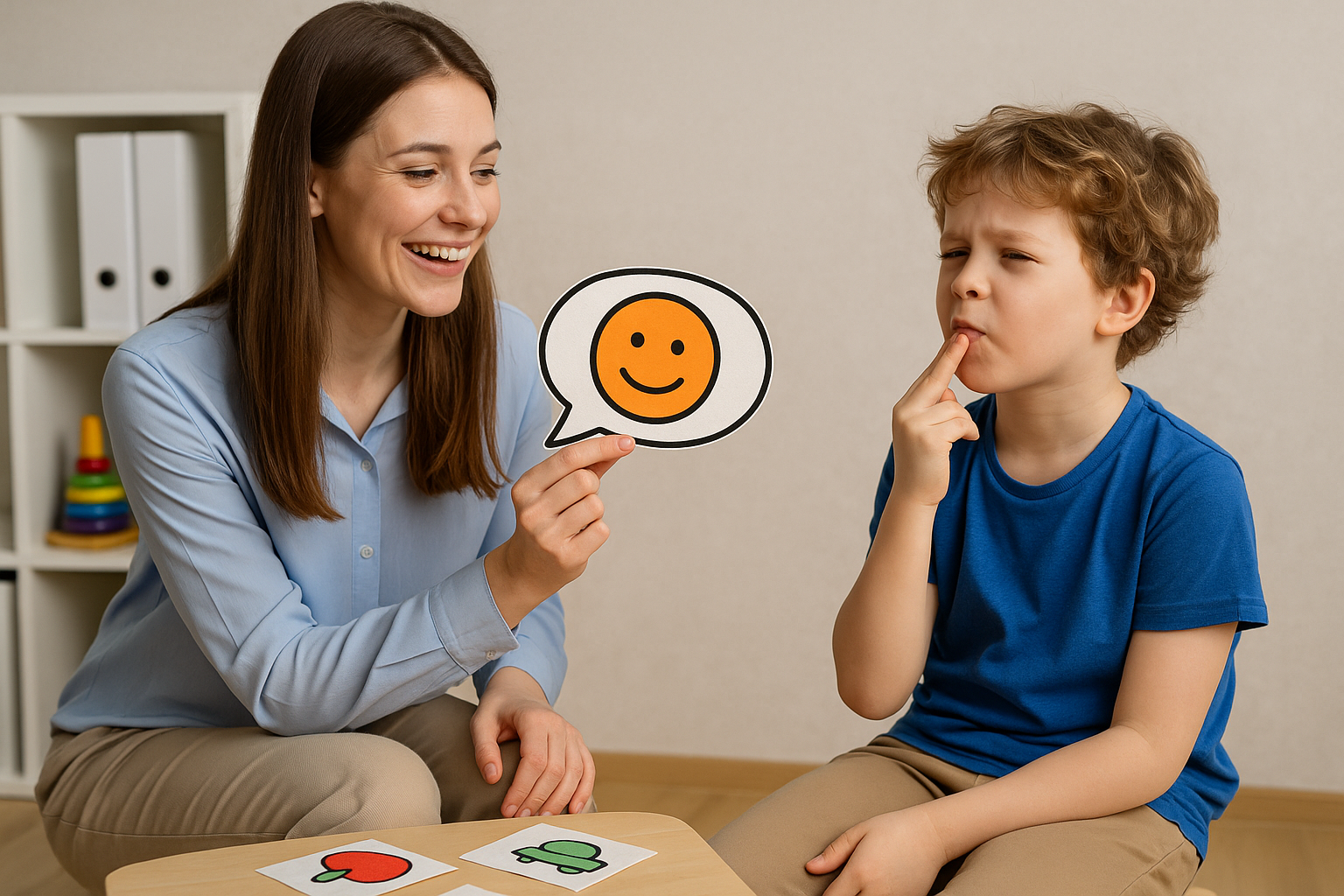Have you ever asked your child, “Do you want water or juice?” and he just stayed silent or repeated the last word, “juice… juice”, without really showing what he wanted?
This doesn’t mean he doesn’t listen or care. Many children with autism experience difficulties in verbal and non-verbal communication: delayed speech, limited use of gestures, or little back-and-forth in conversation.
The good news? With patience, the right tools, and playful activities, you can help your child strengthen these skills step by step.
Common Communication Challenges in Autism
Children on the spectrum may communicate differently. Let’s imagine a few situations:
- Speech delay: while other kids say full sentences, your child may still be learning how to express a single word.
- Limited gestures: instead of pointing at the toy he wants or waving goodbye, he might stay still.
- Different conversation flow: you talk about what happened at school, and he suddenly shifts to his favorite topic, like dinosaurs or cars.
Remember: this is not a lack of interest. It’s simply a different way of expressing themselves, and they need support to bridge that gap.
Helpful Toys to Encourage Communication
At home, you don’t need expensive tools. Simple toys can become powerful allies in daily practice:
- Big puzzles – to improve focus while naming each piece.
- Puppets or dolls – to encourage symbolic play and gestures.
- Picture cards (food, emotions, objects) – to help your child point or choose when words are still hard.
- Turn-taking games (ring toss, stacking blocks) – to teach patience, imitation, and sharing.
These toys are more than just fun. They create natural opportunities for interaction and learning.
A Simple Activity You Can Try Today
Here’s an easy exercise you can do with your child at home:
- Pick a favorite toy – for example, a car.
- Model simple sentences – “The car goes… the car stops.”
- Invite participation – say “Your turn” and wait. Even if your child only makes a sound (“vroom”), that’s progress.
- Celebrate the effort – smile, clap, or give a hug so he connects communication with positive feelings.
Step by step, these moments build stronger skills, more words, and better interaction.
Final Thoughts
Every word, gesture, or sound matters. Communication is not about forcing, but about guiding and supporting your child at his own pace. With the right toys and playful activities, you can transform everyday moments into powerful opportunities for growth.
